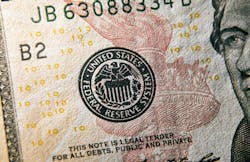When Will the Fed’s Rate Hikes Come to an End?
The Federal Reserve is continuing to tighten its monetary policy, announcing its fourth consecutive 75 basis point rate increase that will push the fed funds rate to a 15-year high, according to NAHB Eye on Housing. The Fed’s rate hikes are already having an effect on a cooling housing market, and its September “dot plot” indicated that the central bank expects the target for the federal funds rate by another 75 basis points in November, followed by 50 in December and 25 points at the start of 2023.
As skyrocketing rates kickstart a market correction and cause home prices to fall in a number of overheated metros, the Fed is hoping that new interest rate gains will cause supply and demand to rebalance after years of soaring housing costs, low inventory, and fast-paced home sales.
Combined with quantitative tightening from balance sheet reduction (in particular $35 billion of mortgage-backed securities (MBS) per month), the combination of past moves and expected, additional rate hikes represents a significant amount of monetary policy tightening over a short period of time. Given this intended policy stance, a hard landing with a mild economic recession is, in our view, highly likely. However, by 2025, the Fed is forecasting a return to a normalized rate of 2.5% for the federal funds rate.
